Prokaryotic Gene Regulation
1/29
There's no tags or description
Looks like no tags are added yet.
Name | Mastery | Learn | Test | Matching | Spaced |
|---|
No study sessions yet.
30 Terms
What is basal state?
Basal state is the normal state of gene expression in the absence of specific regulatory signals (either expressed or not expressed depending on the system)
What is anabolic pathway?
A metabolic pathway that builds complex molecules from similar ones, often requiring energy

What is catabolic pathway?
A metabolic pathway that breaks down complex molecules into simpler ones, often releasing energy

What is attenuation?
Attenuation is the regulatory mechanism in some bacterial operators that involves premature termination of transcription based on the availability of the end product
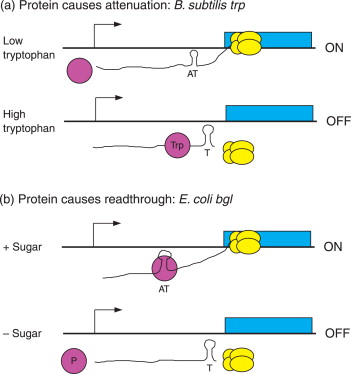
What is CAP (Catabolite Activator Protein)?
Cap is a transcriptional activator protein in bacteria that binds to cAMP and then to specific promotor regions to enhance gene transcription, particularly when glucose levels are low. It is a bacterial protein that regulates gene expression in response to sugar availability

What is cAMP?
Cyclic AMP is a signaling molecule in bacteria whose levels are inversely related to glucose levels. It binds to CAP to activate it. It is a second messenger derived from ATP, relaying signals from the cell surface receptors

What is constitutive gene expression?
Constitutive gene expression refers to the continuous and unregulated production of proteins from a gene. These genes are always “on” regardless of environmental conditions. they control the ability of DNA to replicate, express, and repair itself
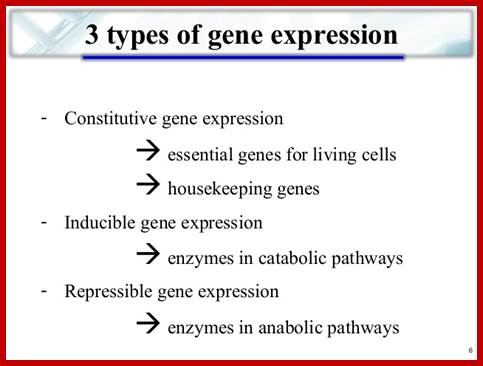
What is a corepressor?
A corepressor is a small molecules that binds to a repressor protein, causing the repressor to bind to the operator and inhibit gene expression (seen in repressive systems)

What is feedback inhibition?
Feedback inhibition is a cellular control mechanism, in which the activity of an enzyme is inhibited by the end product of a biochemical pathway
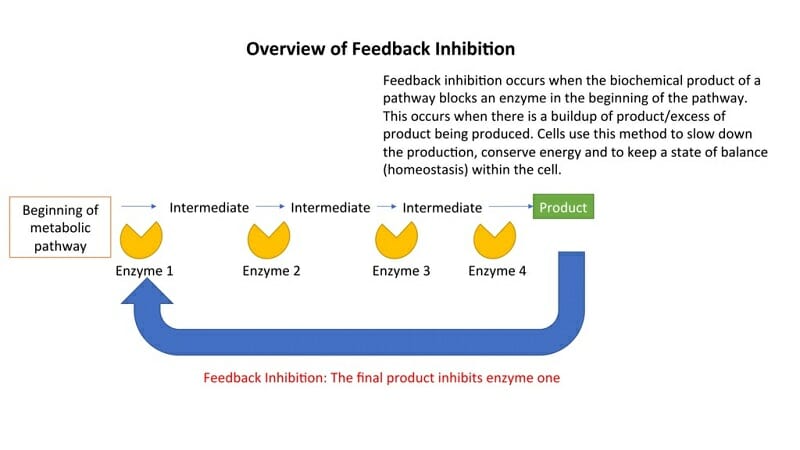
What is inducible gene expression?
Inducible gene expression that is normally “off” but can be turned “on” in the presence of an inducer
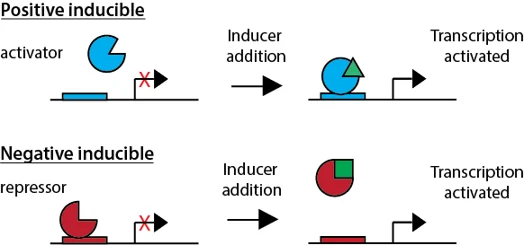
What is an inducer?
An inducer is a small molecule that binds to a repressor protein, causing it to release the operator and allow gene expression (seen in inducible systems)
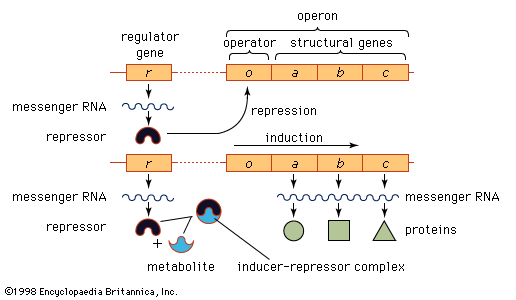
What is an operator?
The operator is a DNA sequence within or adjacent to the promoter region of an operant where a repressor protein can bind to block transcription
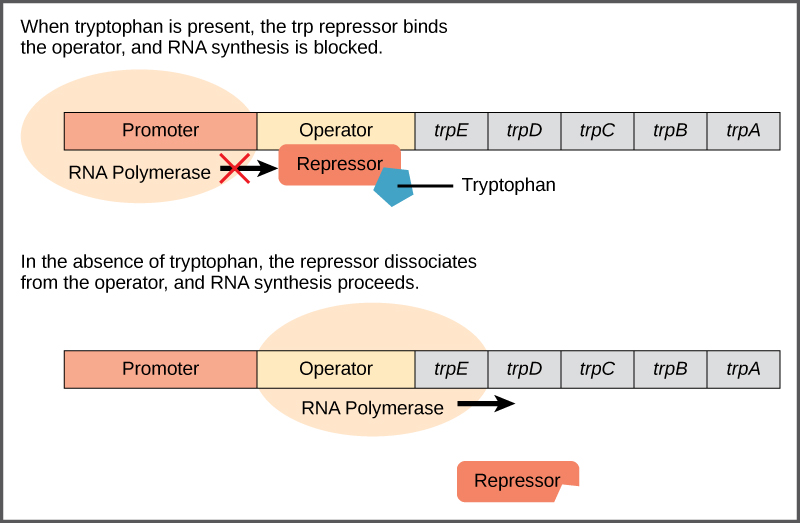
What is an operon?
An operon is a cluster of genes under the control of a single promoter and operator, along with the regulatory sequences that control their expression

What is post-transcriptional regulation?
Post-transcriptional regulation is the control of gene expression that occurs after protein synthesis, such as protein folding, modification, transport, and degradation, as well as enzyme activity regulation. This is the control of gene expression after RNA has been transcribed from DNA
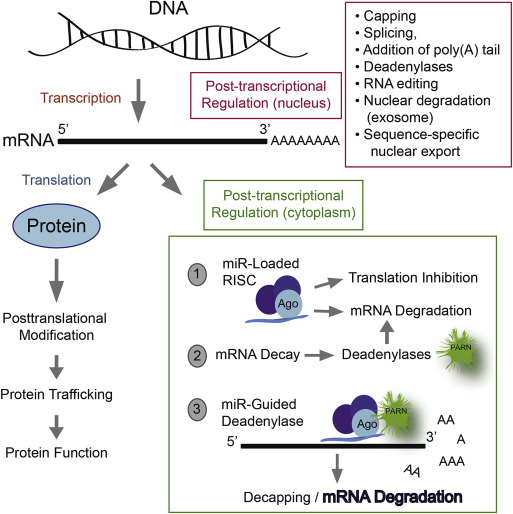
What is post-translational Regulation?
Post-translation regulation control gene expression that occurs after protein synthesis, such as protein folding, modification, transport, and degradation, as well as enzyme activity regulation
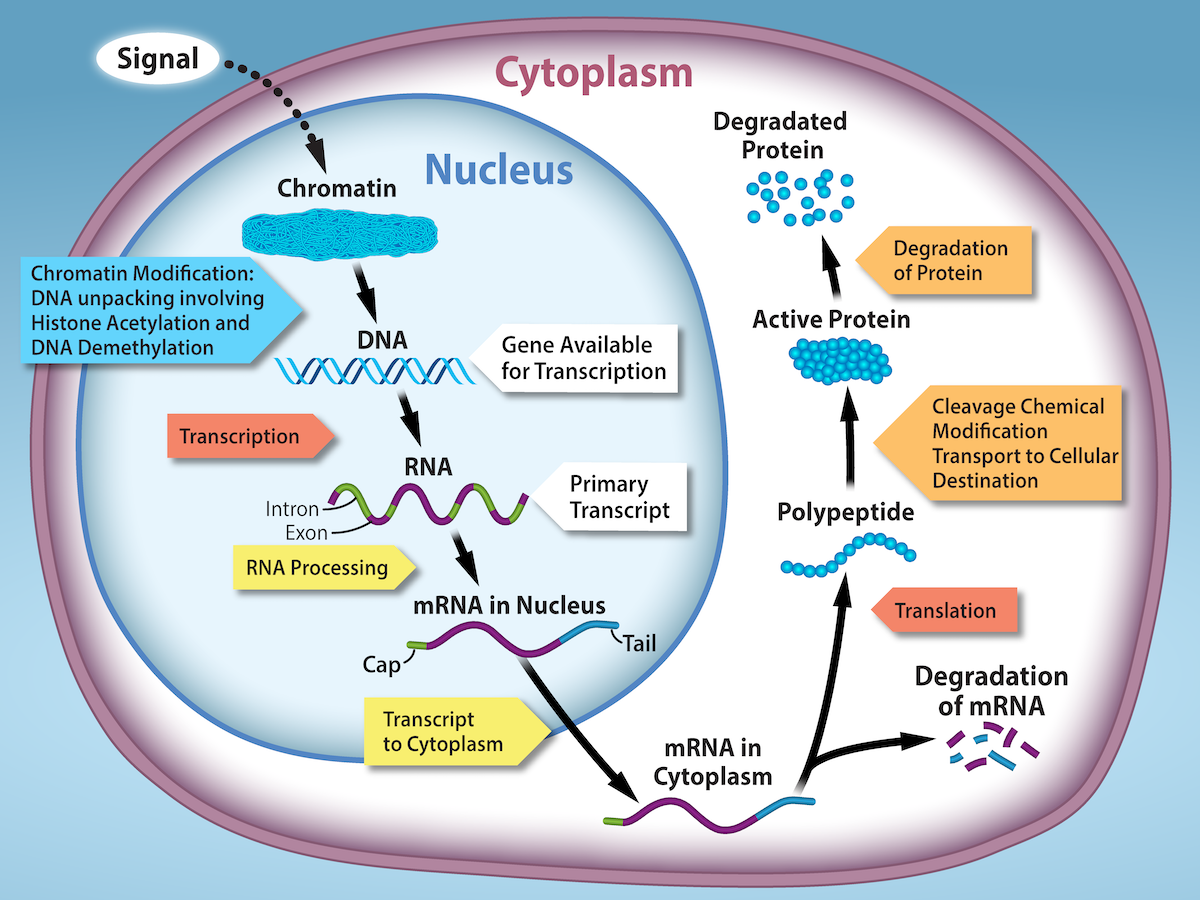
What is a promoter?
A promoter is a specific DNA sequence located upstream of a gene that initiates transcription. It acts as a “landing pad” for RNA polymerase that initiates transcription

What is regulated gene expression?
Regulated gene expression is gene expression that is controlled in response to cellular or environmental signals

What is repressible gene expression?
Repressible gene expression is a gene expression that is normally “on” but can be turned “off” in the presence of a repressor or corepressor
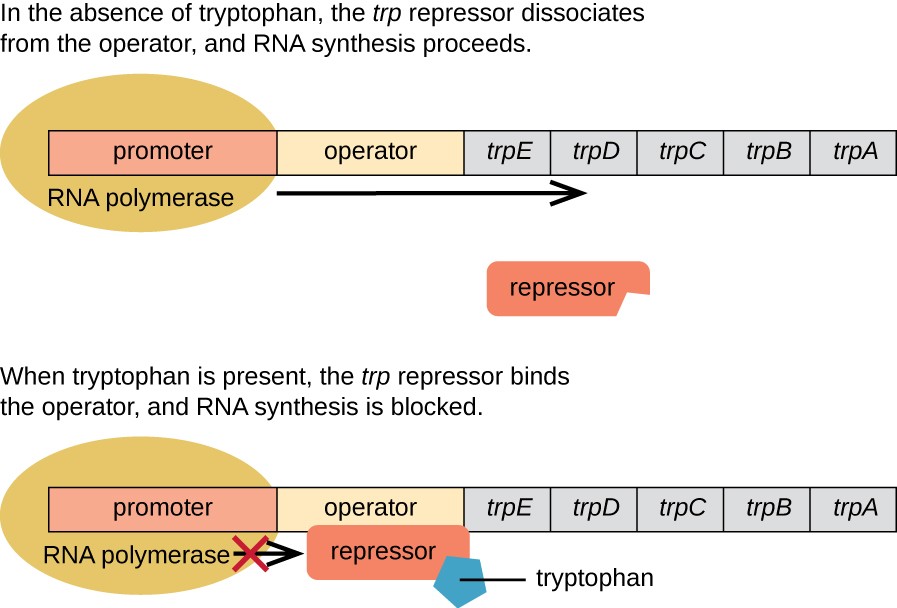
What is a repressor?
A repressor is a regulatory protein that can bind to the operator sequence of an operon and block transcription
What are structural genes?
Genes within an operon that code for proteins (usually enzymes) involved in a particular metabolic pathway
What is the fundamental difference between constitutive and regulated gene expression in prokaryotes?
Constitutive genes are expressed continuously at a relatively constant level, while regulated genes have their expression levels controlled in response to cellular or environmental signals. This allows prokaryotes at adapt to changing conditions and conserve resources
Describe the general mechanism of inducible gene expression. In what type of metabolic pathways is this often observed?
In inducible gene expression, the gene is typically not transcribed. The presence of a specific molecules, called an inducer, binds to a regulatory protein (usually a repressor), causing it to change shape and no longer block transcription, thus turning the gene “on”. This is often seen in catabolic pathways where the cell needs to produce enzymes to break down a specific substrate only when that substrate is avaliable
Explain the role of the repressor protein in the regulation of the lac operon in the absence of lactose
In the absence of lactose, the lac repressor protein is in its active conformation and binds tightly to the operator region of the lac operon. This physical binding blocks RNA polymerase from binding to the promoter and transcribing the structural genes in the operon, thus preventing gene expression
How does the presence of lactose lead to the expression of the genes in the lac operon?
When lactose is present, it is considered allolactose, which acts as an inducer. Allolactose binds to the lac repressor protein, causing a conformational change. This altered repressor can no longer bind effectively to the operator, allowing RNA polymerase to bind to the promotor and transcribe the lac operon genes
What is catabolic repression, and how does the binding of CAP/cAMP affect the transcription of the lac operon?
Catabolic repression, aka the glucose effect, is tghe reduced expression of genes required for the metabolism of other sugars (like lactose) when glucose is present. High glucose levels lead to low levels of cyclic AMP (cAMP), which is required for the Catabolite Activator Protein (CAP) to bind to the lac promoter and enhance transcription
Describe the general mechanism of repressible gene expression. In what type of metabolic pathway is this often observed?
In repressible gene expression, the gene is is typically transcribed. The presence of a specific molecule, called a corepressor, binds to a regulatory protein (usually a repressor), causing the repressor to bind to the operator and block transcription, thus turning the gene “off”. This is commonly observed in anabolic pathways where the cell stops producing a molecule when it is readily available
Explain how tryptophan regulates the expression of the trip operon through repression
The trp operon, involved in tryptophan biosynthesis (amino acid used in biosynthesis of proteins), is regulated by tryptophan itself. When tryptophan levels are low, the trp repressor protein is inactive and cannot bind to the operator, allowing transcription of the genes needed to synthesize tryptophan. However, when tryptophan levels are high, tryptophan acts as a corepressor, binding to the trp repressor and activating it. The active repressor then binds to the operator, blocking transcription

What is attenuation in the context of the trp operon, and under what conditions does it lead to premature termination of transcription?
Attenuation is a regulatory mechanism in the trp operon that causes premature termination of transcription before the full-length mRNA is produced. When tryptophan levels are high, ribosome movement through a leader sequence in the mRNA is fast, leading to a specific stem-loop structure that signals RNA polymerase to stop transcription prematurely
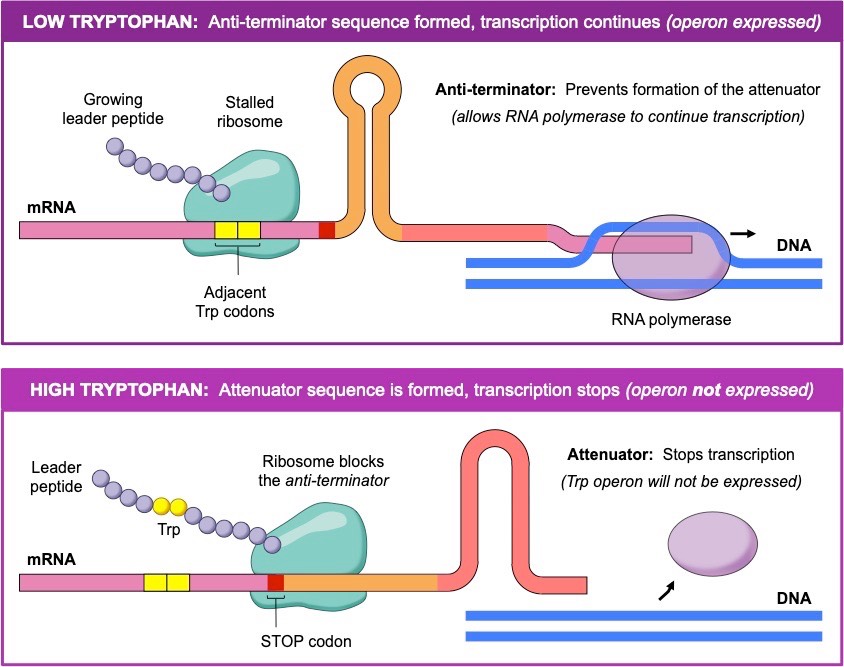
Besides transcription, at what other level is gene expression regulated in prokaryotes?
While the primary level of regulation in prokaryotes is at the level of transcription, gene expression is also regulated postransscriptionally, mainly at the level of translation. One example is unequal efficiencies of translational initiation, where some mRNAs are more readily bound and translated by ribosomes than others
Describe the process of feedback inhibition and its role in post-translational control of gene expression
Feedback inhibition is a post-translational regulatory mechanism where the end product of a metabolic pathway inhibits the activity of an enzyme early in the pathway, often the first committed step. This provides a rapid way to control the production of a substance by preventing the accumulation of excess product